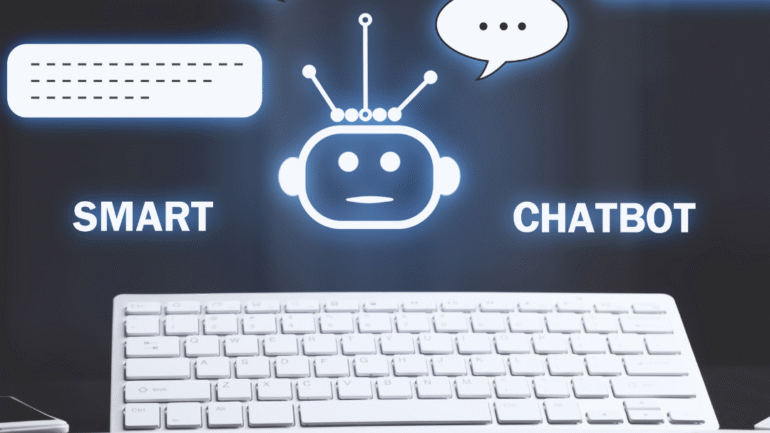Creating an AI-powered chatbot can transform how businesses interact with customers. To build an effective AI chatbot, one must focus on integrating natural language processing, user-friendly design, and continuous learning capabilities. These elements ensure that the chatbot not only answers inquiries accurately but also provides a seamless experience for users.
As organizations look to enhance customer service and engagement, AI chatbots are becoming essential tools. These chatbots can handle a range of tasks, from answering frequently asked questions to facilitating transactions. Understanding how to develop such a system opens up opportunities for innovation and efficiency in communication.
The process involves choosing the right platform, defining clear objectives, and training the chatbot with relevant data to optimize responses. By focusing on these key areas, anyone can create a robust AI-powered chatbot that meets the needs of both the business and its customers.
Understanding AI-Powered Chatbots
AI-powered chatbots are sophisticated systems designed to engage users through conversations. These chatbots utilize advanced technologies to interpret and respond to human language, providing a more interactive experience than traditional tools.
How AI Chatbots Work
AI chatbots leverage artificial intelligence to facilitate communication. They analyze input from users using natural language processing (NLP) and generate responses based on predefined algorithms.
The underlying framework consists of two main components: intent recognition and response generation. Intent recognition involves understanding what the user is asking, while response generation creates relevant replies.
This allows chatbots to handle various tasks, from answering questions to providing recommendations. The result is a seamless interaction that mimics human conversation.
Types of Chatbots
There are primarily two types of chatbots: rule-based and AI-powered. Rule-based chatbots operate on predefined scripts, offering limited interaction based on specific keywords.
In contrast, AI-powered chatbots use machine learning to learn from vast amounts of data. They adapt over time, improving their understanding and responding more accurately to user queries.
AI chatbots can engage in contextual conversations, making them suitable for customer support and personal assistants. They provide a more nuanced approach than their rule-based counterparts.
Role of Natural Language Processing
Natural language processing (NLP) is crucial for AI chatbots. It enables these systems to interpret human language accurately. NLP involves several techniques, including tokenization, sentiment analysis, and named entity recognition.
Tokenization breaks down sentences into manageable parts, while sentiment analysis assesses the emotional tone. Named entity recognition identifies key information, such as dates or locations.
These processes allow the chatbot to grasp the context and meaning of user inputs, ensuring accurate responses. The effectiveness of a chatbot heavily relies on its NLP capabilities.
Machine Learning and Deep Learning Foundations
Machine learning and deep learning are foundational to developing AI-powered chatbots. Machine learning algorithms analyze data patterns to improve performance and effectiveness continuously.
Deep learning, a subset of machine learning, utilizes neural networks for more complex tasks. This technology enables chatbots to process vast amounts of information and learn from experience.
Together, these technologies facilitate advanced functionalities in conversational AI. They help chatbots understand context, maintain conversation flow, and handle diverse user interactions efficiently.
Step-by-Step Guide to Creating an AI-Powered Chatbot
Creating an AI-powered chatbot involves a series of deliberate steps. By defining use cases, selecting the right platform, designing conversation flows, and training the bot effectively, one can build a functional and effective chatbot.
Defining Use Cases and Objectives
Identifying clear use cases is vital before developing an AI chatbot. He or she should begin by determining what specific problems the chatbot will solve. This involves understanding user needs and the desired outcomes.
Common use cases include:
- Customer Support: Providing instant responses to frequently asked questions (FAQ).
- E-commerce Assistance: Helping users with product inquiries and order tracking.
- Lead Generation: Collecting user information and qualifying leads.
Setting clear objectives will guide the development process and ensure that the chatbot fulfills its intended purpose.
Selecting a Chatbot Platform
Choosing a suitable chatbot platform is critical for the bot’s performance and capabilities. There are many options available, each catering to different needs.
Key considerations include:
- Ease of Use: Look for platforms with intuitive interfaces for easy bot creation and management.
- AI Integration: Ensure the platform supports AI features for dynamic responses.
- Backend and Frontend Capabilities: Check for seamless integration with existing systems and a robust user interface.
Popular platforms include Dialogflow, Microsoft Bot Framework, and Chatfuel, each offering unique functionalities.
Designing Conversation Flows
Effective conversation flow design enhances user experience. He or she should create structured pathways that guide users through interactions.
Steps to design flows include:
- Mapping Out Scenarios: Identify potential user inputs and desired bot responses.
- Using Conditional Logic: Implement if-then statements to handle variations in user queries.
- Incorporating a Knowledge Base: Ensure the bot has access to relevant information to provide accurate responses.
Flowcharts can be helpful tools to visualize the communication routes.
Training the Chatbot with Data
Training the chatbot with high-quality data is essential for its performance. He or she should gather relevant datasets that reflect actual user interactions.
Important aspects of training include:
- Providing Diverse Examples: Include various user questions to cover multiple scenarios.
- Continuous Learning: Use analytics to monitor conversations and improve responses over time.
- Testing Data Quality: Regularly update the knowledge base to reflect new information and trends.
Well-trained chatbots will provide more accurate answers and improve user satisfaction.
Integrating and Deploying Chatbots Across Channels
To effectively integrate and deploy chatbots, focusing on connectivity to various messaging channels is crucial. Ensuring compatibility with popular platforms enhances user interaction and experience. Additionally, scalability and security considerations are vital for maintaining performance across different environments.
Connecting to Messaging Channels
Integrating chatbots with popular messaging channels allows users to interact with businesses through their preferred platforms, enhancing accessibility and engagement. Commonly used channels include Facebook Messenger, WhatsApp, Telegram, and SMS, all designed to support automated, real-time communication.
For example, businesses looking to strengthen their presence on Telegram can benefit from choosing the best telegram ai chatbot. This enables automated support, instant responses, and seamless user engagement directly within the app.
To achieve this integration, chatbots leverage APIs to connect with these messaging platforms. This process typically involves creating a bot on the respective channel and configuring webhook endpoints, which facilitate real-time communication and event handling.
Beyond consumer messaging apps, businesses also integrate chatbots with workplace communication tools like Slack or Microsoft Teams. This allows embedding automated assistants directly into team workflows, providing instant responses to queries and streamlining collaboration.
Moreover, chatbot capability can be extended through voice-enabled integrations using technologies such as Amazon Lex. This enables handling speech-based requests, thus offering users enhanced interaction options beyond traditional text messaging.
Integration With Popular Platforms
When deploying chatbots, integration with popular platforms enhances functionality and usability. Chatbots can work seamlessly with customer support tools, CRM systems, or e-commerce platforms.
For instance, integrating a chatbot with CRM software allows for personalized customer interactions based on user data. This kind of integration often involves using SDKs and APIs provided by platforms like ChatGPT or Amazon Lex.
Additionally, many of these platforms offer free trials, enabling developers to experiment before committing to a solution. This flexibility helps in fine-tuning the chatbot’s responses based on feedback from actual users.
Ensuring Scalability and Security
Scalability is essential for handling increased user interactions without degrading performance. Implementing cloud solutions and load balancing can facilitate this growth.
Security measures must also be prioritized during deployment. Utilizing encryption protocols, secure API integrations, and maintaining compliance with data protection regulations are important steps.
For AI chatbots, monitoring user interactions can provide insights into potential vulnerabilities. Regular updates and patches are necessary to protect against emerging threats, ensuring a safe environment for users interacting with AI-powered chatbots.
Enhancing Chatbot Performance and User Experience
Improving chatbot effectiveness can significantly elevate customer engagement and enhance user experience. Key strategies include optimizing interactions, offering multilingual support, and refining customer service to drive lead generation.
Optimizing Customer Engagement
To optimize customer engagement, it is essential to ensure the chatbot understands user intent accurately. This can be achieved using Natural Language Processing (NLP) techniques that allow the bot to interpret varied user inputs efficiently.
Key Techniques:
- Personalization: Tailoring responses based on customer history enhances satisfaction.
- Proactive Interaction: Initiating conversations based on user behavior can increase engagement rates.
- Feedback Mechanisms: Collecting user feedback helps improve the bot’s performance over time.
These practices enable the chatbot to deliver a more relevant and engaging experience, fostering stronger connections with users.
Supporting Multilingual Capabilities
Implementing multilingual support broadens the chatbot’s accessibility. This approach caters to diverse customer bases and improves overall user experience.
Key Strategies Include:
- Language Detection: Automatically identifying the user’s language helps streamline interactions.
- Translation Models: Using robust translation algorithms ensures accurate communication.
- Cultural Relevance: Crafting responses that resonate with specific cultural contexts enhances relatability.
By supporting multiple languages, the chatbot can serve a global audience, making users feel valued and understood.
Improving Customer Service and Lead Generation
Enhancing customer service through chatbots can lead to efficient lead generation. Automated assistance improves response times, resulting in better customer satisfaction.
Focus Areas:
- 24/7 Availability: Chatbots provide instant responses outside regular hours, increasing engagement.
- Qualifying Leads: Utilizing predetermined questions can filter potential leads effectively.
- Integration with CRM Tools: Connecting the chatbot to Customer Relationship Management (CRM) systems helps streamline follow-ups and data collection.
These improvements lead to elevated customer experiences and higher conversion rates.





